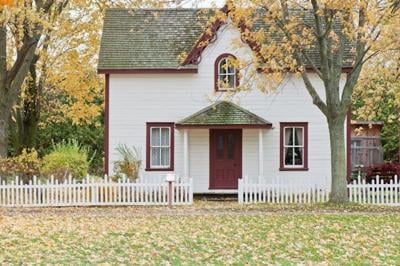Autumn is a time where you can enjoy your garden and all the beautiful range of colors that nature offers us. However, this is also a season where extra maintenance and attention is required. It is vital that your garden is gradually prepared for the changing season; the lawn needs mowing, the hedges need trimming, and frost-sensitive plants require protection. All these must be carefully prepared before winter so that they can last well into the next year. Here are some top gardening tips to help you during the autumn season.
Mow The Lawn
When tidying up your lawn, aim to remove all the leaves which have fallen before mowing. The lawn should also be kept short, at about four centimeters, because if its shorter, frost can quickly get in. Furthermore, if it's too long, the delicate grass stems can break in the snow.
Fertilize The Soil
When fertilizing your soil, many experts advise using organic substances such as compost instead of artificial fertilizers. Earthworms and microorganisms ensure that the nutrients are available to the plants and therefore improve the soil structure. A potassium-rich fertilizer strengthens the stalks and gives the plants and grass other reserve materials to withstand the frost of winter better.

Cut The Hedges & Flowers
When all the leaves have fallen, you should cut out the deadwood from your hedge. If you failed to trim your hedge in summer, try to do it well before the winter. For safety purposes, the trimming of your hedges must not be attempted in heavy frost below minus five degrees.
Cutting is not only limited to the hedges but also includes the plants and flowers. Lift any fallen leaves and cut the flowers that have withered. You can even use them to prepare compost. When clearing leaves, try not to move or manipulate the branches of trees to generate the fall of the leaves. Doing so will cause wounds in the insertion of the healthy leaves, which can cause bacteria and fungi to enter.
Bring All Plants Indoors
All the plants need to be packed and brought indoors. Place the plants from warmer climates in pots inside the house, especially if you live in areas with frost or temperatures below 0ºC. That way you can maintain their health. Also, dig up any aromatic plants that are more sensitive to the cold and place them into pots, stored in the kitchen.
For the potted plants that can stay outdoors without dying, try to wrap their pots, so the roots are better protected against frost; saran wrap is suitable enough for this, but the plants themselves must never be covered with air and opaque materials because they sweat underneath and could dry out too early.
Tie Grass Together
High grasses can be tied together in autumn by gathering the stalks and turning them in together so that no water comes into the grass center. Doing this will essentially protect them against frost damage. You can tie the stalks with a cord or a colorful wide rubber band ribbon; the bundles also become an eye-catcher in the garden.
Protect Hedgehogs, Birds, And Insects
In winter, it’s not only the plants which need special protection. Wildlife is also dependent on help. Garden sheds or workshops similar to what 1st Choice Garden Workshops install can provide hedgehogs with winter shelter. You can also leave the door to the garden shed open so that other insects and animals such as butterflies can find also find some shelter there. Additionally, by building a bird feeder or creating other feeding areas, this can be very beneficial for birds in winter.
Keep Planting
The autumn season is also the best time to plant the bulbs that will fill your garden with spring flowers; among them are the hyacinths, tulips, daffodils, anemones, cornice, and buttercups. If you want to plant a tree, remember to clean the surrounding weeds because they can become competitors to obtain water and nutrients from the soil. You can also create a well to store the rainwater, which is a good idea for the drier areas of the garden. When caring for roses, try to cover the foot of the leaves and shrubs using a layer of leaves to ensure the soil doesn't dry out and will retain all the nutrients, as well as protecting the roots from low temperatures.



(0) comments
Welcome to the discussion.
Log In
Keep it Clean. Please avoid obscene, vulgar, lewd, racist or sexually-oriented language.
PLEASE TURN OFF YOUR CAPS LOCK.
Don't Threaten. Threats of harming another person will not be tolerated.
Be Truthful. Don't knowingly lie about anyone or anything.
Be Nice. No racism, sexism or any sort of -ism that is degrading to another person.
Be Proactive. Use the 'Report' link on each comment to let us know of abusive posts.
Share with Us. We'd love to hear eyewitness accounts, the history behind an article.